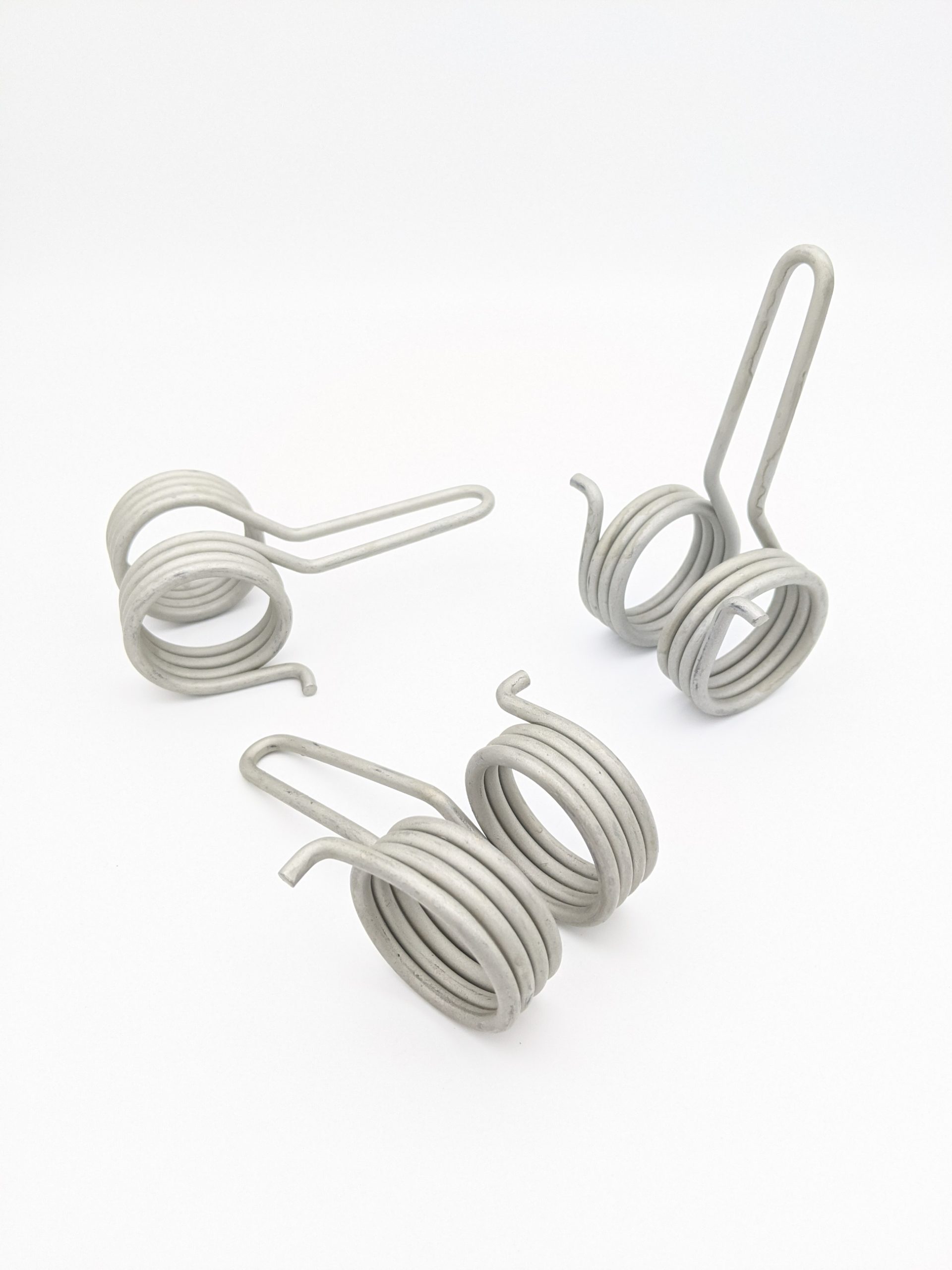Get unique, complex parts easily. No matter your requirements, Chaoyi Spring creates hard-to-produce coil springs and wire forms.
Let us help you create the custom wire form you need, from S-hooks and J-hooks to utility hooks and more.
We work closely with customers across a wide range of industries, helping them design and manufacture made-to-order parts.
Why choose Chaoyi Spring? We prioritize customer-focused collaboration, modern equipment and the latest technology to make your parts per print.
Find the information and guidance you need, from measuring a spring to learning about materials, placing an order and much more.
Torsion springs, those coiled wonders of engineering, are often overlooked, yet they play a pivotal role in countless applications. From the simple act of opening a door to the complex


Torsion springs, those coiled wonders of engineering, are often overlooked, yet they play a pivotal role in countless applications. From the simple act of opening a door to the complex mechanics of a car engine, torsion springs are the unseen heroes ensuring smooth, controlled, and reliable movement. They store and release energy, providing the force necessary for countless functions, making them indispensable in industries ranging from manufacturing to healthcare.

Torsion springs are essentially coiled metal wires that are designed to store and release energy through twisting or torsional stress. Their unique design allows them to generate a force when twisted, and this force is proportional to the angle of twist. The key to their functionality lies in the spring's material, its diameter, the number of coils, and its overall configuration.
These springs are not your average coil springs. Unlike their compression and extension counterparts that store energy by changing length, torsion springs store energy by changing their angle of twist. Think of it as a coiled-up elastic band. When you twist it, it stores energy; when you release it, the energy is released, causing the spring to untwist. This unique characteristic makes torsion springs ideal for applications where rotational or twisting motion is required.
The versatility of torsion springs is truly remarkable. They find their way into an astonishing range of applications, from mundane to complex. In everyday life, we encounter them in door hinges, window latches, and even the spring-loaded mechanism of a retractable pen. However, their applications extend far beyond our immediate surroundings.
In the automotive industry, torsion springs are crucial for suspension systems, providing the necessary force to lift and lower the wheels. They also play a role in steering mechanisms, ensuring smooth and controlled movements. In the world of manufacturing, torsion springs are used in various machinery, including presses, clamps, and conveyors. Their ability to deliver controlled force makes them invaluable in automating industrial processes.
Stepping into the realm of healthcare, torsion springs are employed in medical devices such as surgical instruments and medical beds. Their precision and reliability are essential for delicate procedures and ensuring patient comfort. The applications of torsion springs extend to almost every facet of our lives, making them a cornerstone of modern engineering.
With such a wide range of applications, selecting the right torsion spring for your specific needs is crucial. A key factor to consider is the spring's stiffness or spring rate. This determines how much force the spring will exert for a given angle of twist. For instance, a door hinge requires a relatively low spring rate for smooth operation, while a powerful industrial press demands a much higher spring rate to handle heavy loads.
Another crucial aspect is the material of the spring. Steel is the most common material due to its strength and durability. However, depending on the application, other materials like stainless steel, phosphor bronze, and beryllium copper may be preferred for their corrosion resistance or other unique properties.
The shape and configuration of the spring are also important factors. The number of coils, the diameter of the wire, and the overall length of the spring all influence its performance and ability to meet specific application demands.
Torsion springs are constantly evolving, with ongoing advancements in materials, manufacturing processes, and design techniques. The emergence of high-strength alloys and advanced manufacturing methods allows engineers to create torsion springs with enhanced durability, resilience, and performance. This evolution paves the way for even more innovative applications in industries such as aerospace, robotics, and renewable energy.
For example, torsion springs are being used in wind turbine systems to improve energy efficiency and reduce wear and tear. In the realm of robotics, they are crucial for creating lightweight and agile robots with increased degrees of freedom. As technology advances, we can expect to see even more groundbreaking applications of torsion springs in the future.
In a world driven by complex technology, torsion springs stand as a testament to the elegance and simplicity of engineering ingenuity. Their ability to transform simple twisting motion into powerful and controlled force makes them essential components in countless applications. From the smallest of household appliances to the largest of industrial machinery, torsion springs are the unsung heroes, quietly ensuring the smooth and efficient operation of our modern world.
As we continue to explore new frontiers in technology, the role of torsion springs will only become more prominent. Their versatility, durability, and efficiency make them a cornerstone of engineering innovation, ensuring that we can continue to build a world filled with motion, precision, and controlled power.
Browse some of the custom wire forms and springs that we manufacture. Don’t see what you need? We specialize in made-to-order products that meet your application requirements.
Visit Our GalleryNeed a custom wire form or coil spring? We make it work. Fill out the contact form and a representative will respond within 1 business day. If you have a PDF or CAD file, you can submit to request a quote.